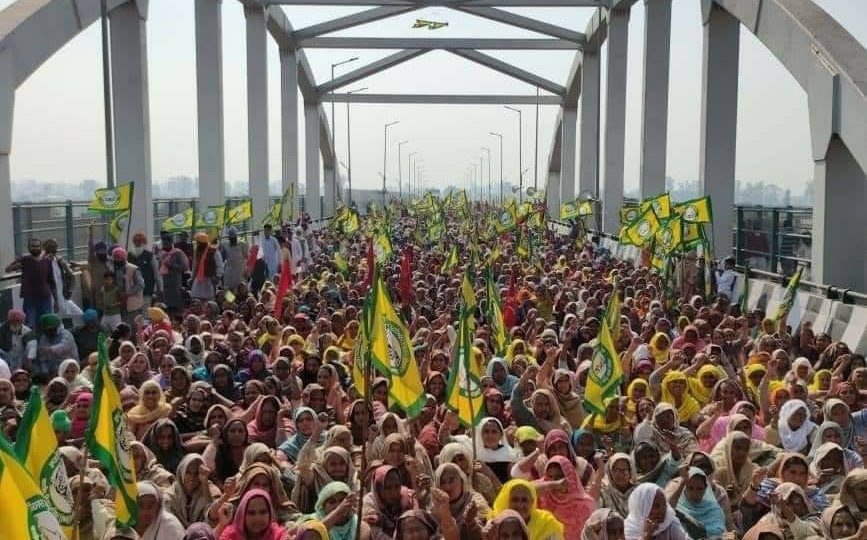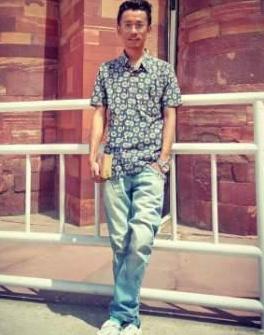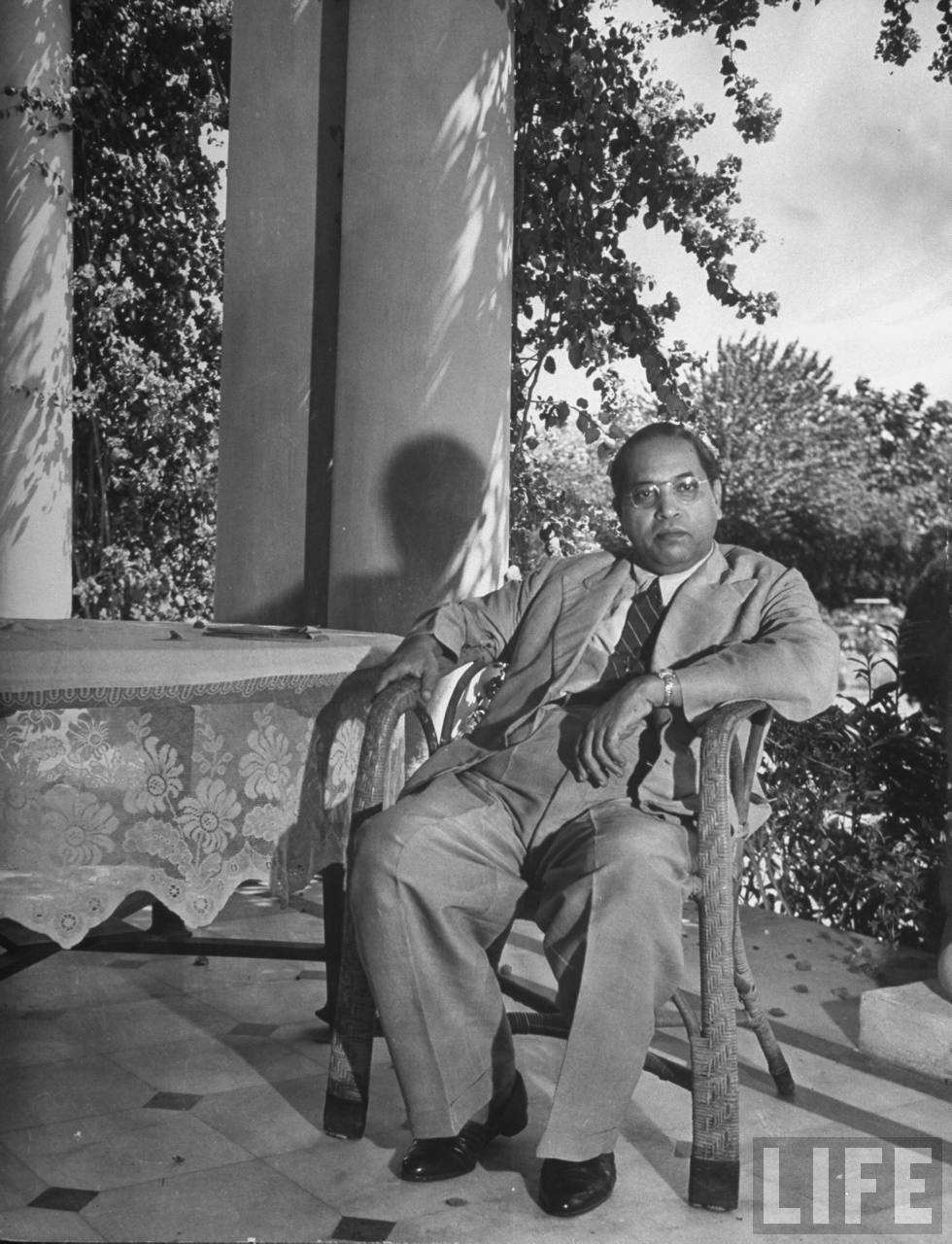Naichashakh (नैचाशाख)
The farmer’s protests which managed to persuasively register themselves in early November as the farmer groups and unions moved past the barricades, heavy police deployment, water cannons, and several other obstacles to lodge themselves firmly at the seat of political power have opened up the many contradictions which make or rather un-make the Indian Republic. The response by the media, government, critics, and supporters makes in-fact a further fertile ground for uncovering the contradictions of making a political demand in “India”. The widespread outcry at the events of the Republic Day by the media, ruling regime and a large section of the public intelligentsia is a prime example of the paradigm of the “political” in the unified India.

Let us pay attention to the charge made across almost all quarters of the “public sphere” that the tractor parade on the Republic Day was violent, unruly and unorderly. Some columnists also declared it an anarchic situation. Considering for a moment that the events were indeed “violent”, what is important for us is the next argument which follows in the same breath that owing to the violence, the protesting groups have lost their moral ground of protest. Moral ground? Why is the ruling regime- and we can count the media and a large section of intelligentsia in the ruling regime insofar as they hold the power to affect the political battle the farmers are fighting- only able to understand the protest as a moral demand? What is the window through this which this “morality” is framed?
All the people who gathered to impose the sit-ins at different borders are present in their capacity as the “public”. They are making a political demand. The Republic of India is premised on theirpower to do so, on their power to negotiate. The farmers are not here to beg the Indian Brahminical state so that it can offer them little alms and certify itself for its benevolence. They are here to negotiate as that organ which forms the “public” in the Re-public or Res-publica (The Latin roots of word Republic are Res and Publica meaning “the public thing”)1. They are here to balance the increasing shift of power towards a centralized state as the crucial organ of the Republic. Then why is the ruling regime obsessed about framing the protests only within a certain kind of moral demand? Because it is within the frame of pity that the ruling regime sees them. One has to portray oneself in the most degraded fashion, as a completely helpless and pitiable being so that the emotions of the ruling regime are moved to throw its customary alms. Consequentially the demand of any protesting group is nullified in the moment they stake a claim to it unapologetically. What is alarming is that not just the ruling regime but even for the well-wishers of the marginalized and farmers, it seems that there is no scope for politics as a domain of its own.
Let’s also compare objectively the “violence” on Republic Day by shifting our gaze to situation elsewhere. On 26th January, one person died unfortunately; he was actually from the farmer’s side. No shops were looted. No cars were harmed. No damage of any public infrastructure on the three routes which were selected for the tractor rally. Let us put this within the scale on which the event was conducted. There were more than a lakh of tractors parading on an unknown route, and with extremely hostile state apparatuses (the police and media) ready to pounce at any mistake. The rally lasted for almost the entire day. A normal human being requires food and pee breaks within this timeframe2. Given all of this, it was astonishingly orderly that everyone was back at the camps by the evening itself. Compare this to the Black Lives Matter protests in America, which acquired sympathy from literally all the quarters in India, especially the journalists. Even the usually silent Bollywood celebrities offered their support for the protest. Showrooms were burnt, shops ransacked, statues of slave-owners torn down. This description would fit most of the protests occurring worldwide. Then why are the same people who vocally supported “the revolution” in other countries massively upset about the one happening home? Why is there a widespread condemnation?
The answer can only be that because it symbolically threatened the ruling regime. It was among one of the many moments where the historical concealment of the force behind the Brahminical Indian state came undone for a moment. The protesting public dared to show its power. It’s not anymore fitting the role of a meek, pitiable creature begging for benevolence. It is out on the streets ready to enter the bastions of state power and demand its due. The issue is that the protesting public is attempting disruption, and this is morally unpalatable for the ruling regime and its apparatus. And this can be the remarkable gift of the farmers’ protest to India- a space for politics as such.
If one were to quickly glance at the “acceptable” arguments to repeal the three contested laws, they can be summarized into two categories. One is that the farmers should collect data for their condition after the implementation of the laws, demonstrate an analysis indicating further deterioration and serve it in the face of NITI Aayog. A task which will always be caught up in the language of pros and cons and ultimately lead to a paralyzing state of the movement. The other alternative is to stick to the framework of the non-violent pitiable meek crowd who by its moral activities demonstrate its suffering so as to finally move the emotions of the ruling regime and secure for itself some charitable offering from it. There is no scope for making a political argument. The fact that the farmers have come together from different areas to form a unified (to an extent) political entity and therefore have the right to leverage their demands and claims is untenable.
We find the similar issue in conflict that every SC/ST student has to undergo in educational institutes. Even though we claim our political right of reservation, every student has to demonstrate how he deserves it? And answer on the lines of how even the rich IAS officers suffer harassment and therefore it is okay for rich Dalits to take reservation and so on. In short, one has to fit the template of deserving the benefits morally. Benefits are allowed for the have-nots but only out of pity. What is hard for the public is to accept that reservation is a political right. Choosing for it is reclaiming what was originally one’s own. Similarly, the farmers as citizens are demanding what is rightfully theirs: conditions to earn a decent livelihood and lead a life of well-being.
The domain of the political as political was Babasaheb’s gift to the public. He very firmly iterated: “On the 26th of January 1950, we are going to enter into a life of contradictions. In politics we will have equality and in social and economic life we will have inequality. In politics we will be recognising the principle of one man one vote and one vote one value. In our social and economic life, we shall, by reason of our social and economic structure, continue to deny the principle of one man one value. How long shall we continue to live this life of contradictions?”3 What is important to note here is that Babasaheb sharply distinguishes the political from the social and economic. My intention here is to neither downplay the social and economic, nor deny their interdependence with the political. The interdependence between the three levels in fact also assumes a prior distinction between them. My intention is to highlight that the political also exists in its own right for Babasaheb. The political is the domain in which he chose to enact in his lifetime that which would otherwise take ages: equality in the social and economic domain. How was Babasaheb able to go ahead with what he himself says is a contradiction?
My wager is that Babasaheb saw the political as a distinct domain of negotiating with the ruling regime. When the marginalized gather together as a group and form strategies to disrupt and stake a claim for what is rightfully theirs, they act politically. The political is the domain which is required to make its demands heard. The political act cannot be performed by a mob. The mob by itself has no demands, no form and no capability to sustain itself. What we have here is a sustained impact with a definite goal and an intention to raise the longstanding agrarian crisis. The disruption therefore is a part of the political. I understand that the we are treading on thin ice here. One could certainly raise an objection that the political entity of protestors and mobs can overlap at times. I agree to an extent. There are no readymade templates for politics. The negotiating protestors have to invent themselves in the context of what they are demanding and who they are demanding from. What is necessary is to keep the horizon of the political alive.
It is evident now that the opposition between Congress and BJP which drives the politics at centre is a false one. If one moves beyond the superficial representation presented by them, there is a continuity between their policies. Moreover, it has been argued very persuasively by Kuffir4, that the first-past-the-post system will ensure that we oscillate between these two national parties. This bleak conclusion prompts us to imagine new ways of negotiating power with the ruling regime. The protests by farmers are one such live embodiment. . They make alive the paradigm of political as political for us. Many other events do too. But these protests do it in the Hindi heartland. We can only take this further if we move beyond the moral framework of pity and suffering for the public. To reflect within oneself whether what is being said fits the broad horizon of the political before arriving at a quick condemnation of violence and the protesting crowd. The issue of violence demands a separate article in itself, insofar as the daily structural violence is repeatedly invisibilized by the system. How does one imagine new dimensions of the political? How to take the power of citizen beyond the right to vote, to actively demanding by speech and actions : conditions of prosperity and well-being? Otherwise, the steady speed with which the caste-ridden society of ours is restructuring itself to make further inroads for capital only spells doom for all.
~
Notes
1. Simona Sawhney raises this point in her recent article on farmers’ protests titled “Res-Publica: The Ground We Share”. She makes a compelling argument on how Re-public has been limited solely to maintaining territorial integrity.
2. The nitty-gritties of the rally has been taken from the Facebook post of Amandeep Sandhu. Follow him for his highly informative reports on the movement.
3. Taken from Ambedkar’s speech to Constituent assembly on November 25, 1949.
4. This issue has been raised several times by Kuffir in his Facebook posts.
~~~
Naichashakh is an aspiring writer and a research scholar on the question of memory and time.










